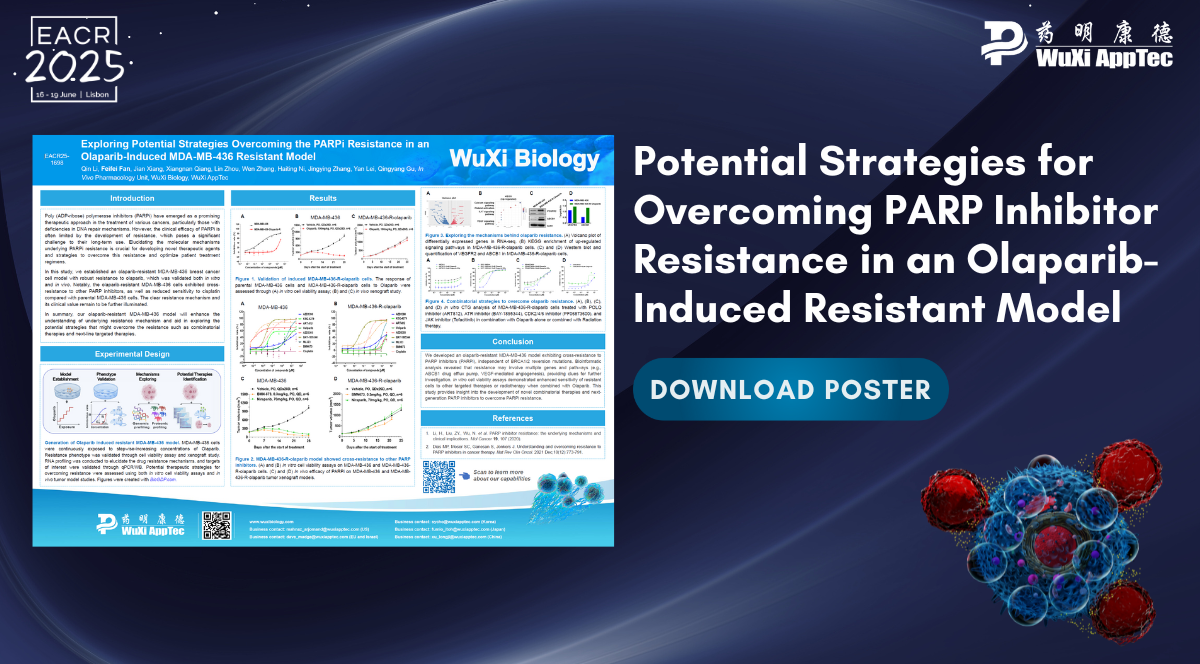Overcoming PARP Inhibitor Resistance in an Olaparib-Induced Model

Poly (ADP-ribose) polymerase inhibitors (PARPi) have emerged as a promising therapeutic approach in the treatment of various cancers, particularly those with deficiencies in DNA repair mechanisms. However, the clinical efficacy of PARPi is often limited by the development of resistance, which poses a significant challenge to their long-term use. Elucidating the molecular mechanisms underlying PARPi resistance is crucial for developing novel therapeutic agents and strategies to overcome this resistance and optimize patient treatment regimens.
At the 2025 European Association for Cancer Research (EACR) Congress, WuXi Biology presented a poster on the establishment of an olaparib-resistant MDA-MB-436 breast cancer cell model, which demonstrated robust resistance to olaparib and was validated both in vitro and in vivo. Notably, the olaparib-resistant MDA-MB-436 cells exhibited cross-resistance to other PARP inhibitors, as well as reduced sensitivity to cisplatin compared with parental MDA-MB-436 cells. Bioinformatic analysis revealed that resistance may involve multiple genes and pathways.

EACR 2025 Poster_Strategies for Overcoming PARP Inhibitor Resistance in an Olaparib-Induced Resistant Model
Related Content
Current preclinical murine models of heart failure with preserved ejection fraction (HFpEF) require prolonged modeling periods, posing significant challenges for...
VIEW RESOURCEInflammatory bowel disease (IBD), which includes ulcerative colitis and Crohn’s disease, is a chronic, immune-mediated disorder characterized by persistent inflammation...
VIEW RESOURCE
